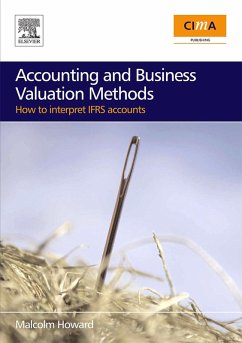This book is intended to appeal to junior accountants and entrepreneurs who need guidance and practical analytical tools to enable them to develop business plans, raise capital and assess risk. Readers can initiate their own business plans by copying over 200 lines of formulae that create a 5 year plan that includes an earnings statement (or profit and loss account), balance sheet and cash flow statement. It will also appeal to students taking accounting and finance modules that cover basic accounting techniques, ratio analysis, investment appraisal, as well as company valuation and share valuation. The book demonstrates with four case studies where practice often differs with theory.Chapter 1 covers basic book-keeping, showing how accounts are reconciled and controlled covering topics such as the working capital cycle and negotiating techniques. Chapter 2 deals with basic business planning and how to use ratio analysis (performance, asset management, structure, and investment ratios) to assess company performance. Chapter 3 explains that published accounts are based on a series of judgements and the effect the relatively new international financial reporting standards and legislation such as the Sarbanes-Oxley Act is having on corporate governance. Chapter 4 covers risk assessment and valuing companies. Four case studies bring everything together; how investment trusts are valued, the effect of restructuring on share prices, the difference between serious profit warnings and mere compliance with regulation and hostile takeovers. Via a thorough analysis of published accounts this book will show readers how to: distinguish between mandatory and optional reports; assess the strength of a company's balance sheet; assess the risk factors associated with investment; assess whether or not the market value of a particular company is justified.* examines the difference between mandatory and optional reports* explains how to assess the strength of a companys balance sheet* looks at how to assess whether or not the market value of a particular company is justified
Dieser Download kann aus rechtlichen Gründen nur mit Rechnungsadresse in A, B, BG, CY, CZ, D, DK, EW, E, FIN, F, GR, HR, H, IRL, I, LT, L, LR, M, NL, PL, P, R, S, SLO, SK ausgeliefert werden.









